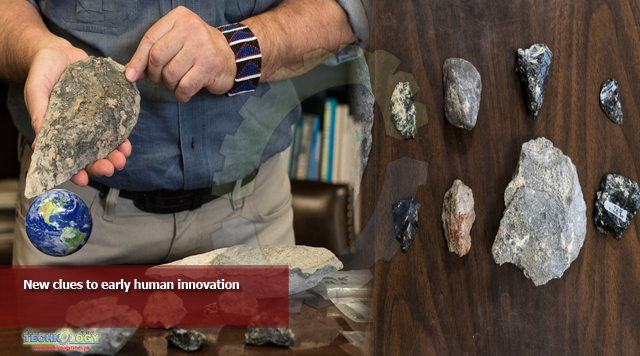Human innovation : Archaeologists have found some rare treasures in a 48,000-year-old cache of bone tools and artefacts excavated from a Sri Lankan cave.

They include the earliest known bow-and-arrow technology found outside Africa and implements possibly used to make clothing a development traditionally believed to have arisen only as protection against cold.
Also uncovered were decorative beads made from the pointed tips of marine snail shells, which likely came from the coast through trade, and the world’s oldest beads made entirely of red ochre.
All offer new insights into how early Homo sapiens adapted to diverse and often extreme environments as they spread across the globe, the researchers suggest in a paper in the journal Science Advances.
And, they add, they highlight the importance of not confining our study of the history of human innovation to the grasslands and coasts of Africa or the temperate environments of Europe.
“[T]his traditional focus has meant that other parts of Africa, Asia, Australasia and the Americas have often been sidelined in discussions of the origins of material culture, such as novel projectile hunting methods or cultural innovations associated with our species,” says Patrick Roberts from Germany’s Max Planck Institute for the Science of Human History (MPI-SHH).
The study was led by Michelle Langley from Australia’s Griffith University and involved researchers from Griffith, MPI-SHH, and the Sri Lankan Government’s Department of Archaeology.
They analysed tools and artefacts from four distinct stages of occupation, between 48,000 and 4000 years ago, discovered in Fa-Hien Lena, in the tropical forests of the island’s southwest, which has emerged as one of South Asia’s most important archaeological sites since the 1980s.
Among them were 130 projectile points made from animal bone and showing impact fractures consistent with hunting damage. Originally used to target monkeys, they increased in length over time for the purpose of hunting larger mammals, such as pigs and deer.
Notches and wear patterns show the points were attached to thin shafts, but they are too short and heavy to have been the tips of blowgun darts. Thus, the researchers conclude, they are the remnants of bow-and-arrow toolkits – the earliest definitive evidence for high-powered projectile hunting in a tropical rainforest environment.
Also recovered were 29 bone tools used to work animal skins, plant fibres or both. The authors hypothesise that clothing made with these implements may have served as protection from insect-borne diseases.
Other tools were identified as implements likely associated with freshwater fishing.
“We also found clear evidence for the production of coloured beads from mineral ochre and the refined making of shell beads traded from the coast, at a similar age to other ‘social signaling’ materials found in Eurasia and Southeast Asia, roughly 45,000 years ago,” says Langley.
Together, she adds, this reveals a complex, early human social network in the tropics of South Asia.
This news was originally published at cosmosmagazine.com